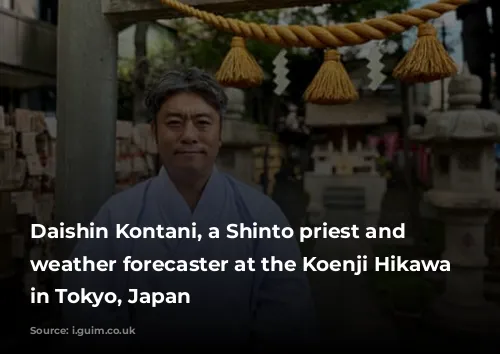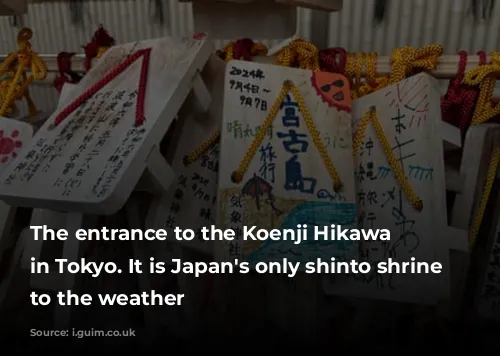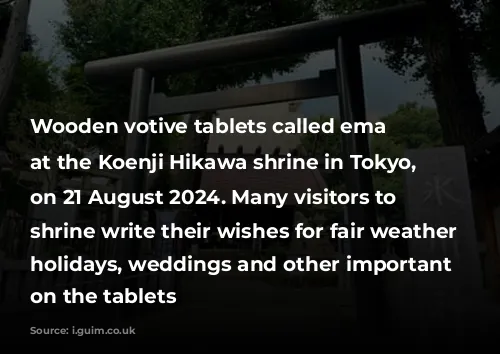Imagine a world where summer is a relentless heatwave and typhoons strike with increasing force. This is the reality facing Japan today, and it’s prompting people to seek solace in an unusual place: the Kisho Jinja weather shrine in Tokyo.

A Shrine for Every Season?
Nestled amidst the vibrant Koenji district, Kisho Jinja is dedicated to the weather gods, offering a unique spiritual sanctuary for those worried about climate change. Visitors flock to the shrine, seeking divine intervention to mitigate the effects of sweltering summers, destructive typhoons, and unpredictable downpours.
“We used to have four seasons,” says Yoichi Yamada, a local resident, “but now it’s just extreme heat and extreme cold.” This sentiment is echoed by many, who are concerned about the impact of climate change on their lives, from food production to the very safety of their homes.

The Rise of Climate Anxiety
The shrine has witnessed a growing number of worshippers seeking stable weather in recent years. Daishin Kontani, a priest and certified weather forecaster at the shrine, attributes this trend to the increasing frequency and severity of climate-related disasters in Japan.
“We’ve seen a surge in flooding and landslides caused by heavy rains,” he explains, “people are looking for a way to calm things down.”
The impact of climate change is undeniable. Japan has been grappling with record-breaking temperatures, devastating landslides, and powerful typhoons. The infamous “guerilla rainstorms” have become a regular occurrence, causing widespread flooding and disrupting daily life. The heatstroke index has even been elevated to a “most severe” category, underscoring the severity of the situation.

A Legacy of Weather Wisdom
The origins of Kisho Jinja are deeply rooted in Japan’s history. During World War II, the Imperial Japanese Army established a weather forecasting unit to aid their military strategy. They believed that understanding the weather held the key to victory, and they sought spiritual guidance from the weather gods.
This led to the creation of the first Kisho Jinja in 1944, a shrine dedicated to Yagokoro Omoikaneno Mikoto, the deity believed to control eight meteorological phenomena.
Even today, visitors to Kisho Jinja write their wishes for fair weather on wooden tablets, seeking divine intervention for everything from weddings to fireworks festivals.
A Shared Responsibility
While many seek solace in the shrine, it’s important to remember that climate change is a global challenge that requires collective action.
“Summers have become so hot,” says Mikako Matsui, the head priest at Koenji Hikawa, “we can no longer do some things we used to do.”
The shrine serves as a reminder of our interconnectedness with the natural world and the importance of taking concrete steps to mitigate the effects of climate change.
As we confront the changing climate, it’s clear that seeking solace in the divine is not enough. We must work together, using human knowledge and collective action, to build a sustainable future for generations to come.

